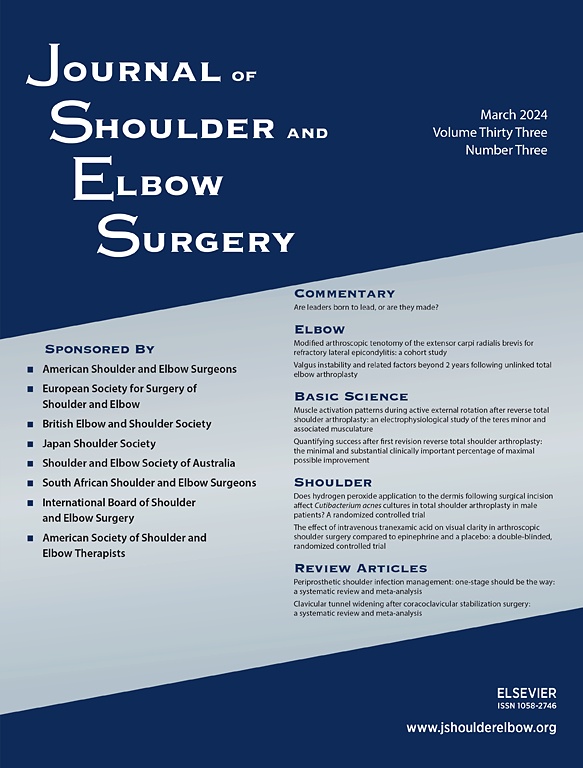
No difference between LIA and interscalene nerve block for pain control post-shoulder arthroplasty

No difference between LIA and interscalene nerve block for pain control post-shoulder arthroplasty
Local infiltration analgesia versus interscalene nerve block for postoperative pain control after shoulder arthroplasty: a prospective, randomized, comparative noninferiority study involving 99 patients
J Shoulder Elbow Surg. 2019 Feb;28(2):212-219.Did you know you're eligible to earn 0.5 CME credits for reading this report? Click Here
Synopsis
99 patients scheduled for shoulder arthroplasty due to shoulder osteoarthritis were randomized to receive local infiltration analgesia with ropivacaine, ketoprofen, and epinephrine, or an interscalene nerve block. The primary outcome of interest was shoulder pain at rest. Secondary outcomes included opioid consumption, subjective shoulder value (SSV), Constant score, severity of pain, duration of ...
To view the full content, login to your account,
or start your 30-day FREE Trial today.
FREE TRIAL
LOGIN
Forgot Password?
Explore some of our unlocked ACE Reports below!

Learn about our AI Driven
High Impact Search Feature
Our AI driven High Impact metric calculates the impact an article will have by considering both the publishing journal and the content of the article itself. Built using the latest advances in natural language processing, OE High Impact predicts an article’s future number of citations better than impact factor alone.
Continue



 LOGIN
LOGIN

Join the Conversation
Please Login or Join to leave comments.